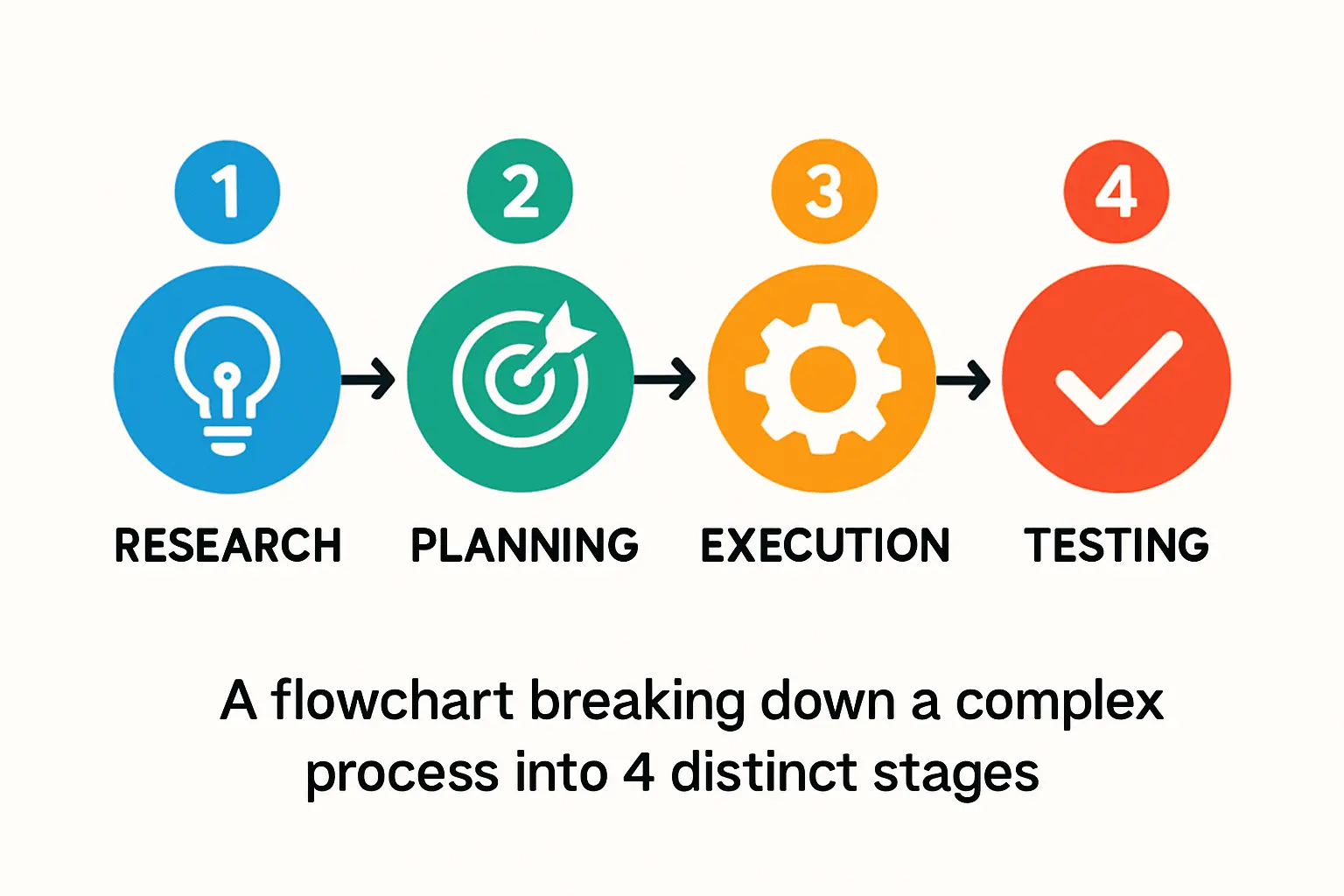The $17M Blueprint: Launching a Profitable Solar Export Hub in Qatar’s Free Zones
The global supply chain for renewable energy is undergoing a significant transformation. For decades, manufacturing has been concentrated in just a few regions, creating dependencies and logistical complexities. Astute investors are now exploring strategic alternatives—locations with superior logistics, favorable regulatory environments, and proximity to high-growth markets. Qatar presents a compelling case.
This article outlines a financial and operational model for establishing a turnkey solar module factory within one of Qatar’s Free Zones. The goal is to create a highly efficient export hub targeting the Middle East, North Africa (MENA), and European markets. The model is built around a 250 MW DESERT+ production line, a specialized solution engineered for high performance in arid, high-temperature environments.
The Qatar Advantage: A Nexus of Geography, Logistics, and Policy
An investor’s choice of location is critical for long-term success. Qatar’s value proposition rests on three pillars: its strategic geographic position, world-class logistics infrastructure, and a supportive regulatory framework designed to attract foreign investment.
A Geographic and Logistical Hub
Positioned at the crossroads of Asia, Europe, and Africa, Qatar provides unparalleled access to key consumer and industrial markets. Its transportation infrastructure is central to this advantage.
- Hamad Port: As one of the largest deep-water ports in the Middle East, it offers extensive global shipping routes, enabling the cost-effective export of finished solar modules and import of raw materials.
- Hamad International Airport: A leading global air cargo hub, it facilitates the rapid shipment of high-value components and urgent spare parts, minimizing production downtime.
This combination reduces shipping times and costs compared to traditional manufacturing centers, giving businesses serving European and regional customers a significant competitive edge.

The Free Zone Framework: A Foundation for Growth
The Qatar Free Zones Authority (QFZA) offers a powerful incentive structure designed for export-oriented businesses. These benefits directly address the common financial and administrative hurdles that international investors face.
Key advantages include:
- 100% Foreign Ownership: Allows complete control over the enterprise without requiring a local partner.
- 20-Year Tax Holiday: A corporate tax exemption for two decades that significantly enhances profitability and accelerates the return on investment.
- Zero Customs Duties: No tariffs on the import of machinery and raw materials or the export of finished goods.
- Streamlined Processes: A single point of contact for registration, licensing, and operational support simplifies setup and administration.
This business-friendly environment, a cornerstone of Qatar’s National Vision 2030 for economic diversification, creates a stable and predictable foundation for long-term manufacturing investment.
The Operational Model: A 250 MW Turnkey Facility
Capitalizing on this strategic location requires a robust and efficient production facility. This model centers on a turnkey solar module factory with an annual capacity of 250 MW. A turnkey approach, like those implemented by J.v.G. Technology, means the entire production line—from equipment selection to installation and staff training—is managed by a single expert partner. This de-risks the project for investors who may not have a background in photovoltaic manufacturing.
The 250 MW DESERT+ Production Line
Selecting the right manufacturing equipment is central to the operation. This model utilizes the J.v.G. DESERT+ line, engineered to produce high-efficiency modules (e.g., M10/G12 TOPCon bifacial) that perform exceptionally well in the high-irradiation and high-temperature conditions common to the MENA region.
The line is a semi-automated setup, balancing investment cost with high output and quality control. Key stages include:
- Cell Stringing: Automated soldering of solar cells into strings.
- Layup: Precise, automated assembly of strings, glass, encapsulant, and backsheets.
- Lamination: The critical process of bonding all layers into a durable, weatherproof panel.
- Framing and Junction Box Assembly: Finalizing the module for structural integrity and electrical connection.
- Testing: Each module undergoes rigorous testing (sun simulation and electroluminescence) to guarantee performance and quality standards.
Staffing and Operational Footprint
A facility of this scale is remarkably efficient in its staffing requirements. Based on similar J.v.G. turnkey projects, the estimated personnel are as follows:
- Production Staff: Approximately 60–70 operators working in two shifts.
- Management & Administration: 10–15 personnel, including a general manager, quality control engineers, and administrative staff.
- Required Space: A suitable industrial building requires approximately 5,000 to 6,000 square meters to accommodate the production line, warehousing for raw materials, and storage for finished goods.

The Financial Case: A Detailed Investment Projection
Any major investment demands a thorough financial analysis. The following projections provide a clear framework for evaluating the viability of a 250 MW factory in Qatar. These figures are illustrative and form a strong basis for a detailed business plan.
Capital Expenditure (CAPEX)
This is the initial, one-time investment required to establish the facility.
- Production Equipment (250 MW Line): ~$8.0 – $9.5 million
- Building & Infrastructure Fit-Out: ~$1.5 – $2.5 million
- Logistics, Installation & Training: ~$1.0 – $1.5 million
- Initial Working Capital & Contingency: ~$3.0 – $4.0 million
- Total Estimated CAPEX: ~$13.5 – $17.5 million
Annual Operational Expenditure (OPEX) & Revenue
-
Raw Materials (at full capacity): ~$55 – $65 million
-
Labor & Salaries: ~$1.5 – $2.0 million
-
Utilities (Electricity, Water): ~$0.5 – $0.8 million (Note: Qatar offers competitive energy prices)
-
Logistics & Other Overheads: ~$1.0 – $1.5 million
-
Total Estimated Annual OPEX: ~$58 – $70 million
-
Projected Annual Revenue: Based on producing 250 MW and a conservative average selling price of $0.32/Wp, annual revenue is projected at approximately $80 million.
Return on Investment (ROI)
With a projected annual gross profit of $10 to $22 million, the financial returns are compelling.
- Internal Rate of Return (IRR): Typically ranges from 25% to 35%, depending on final costs and market prices.
- Payback Period: The initial investment can often be recouped within 3 to 4 years.
The 20-year tax holiday offered by the Qatar Free Zone is a critical factor that significantly enhances these returns, making the financial case exceptionally strong compared to other locations.

Market Access: Serving High-Demand Regions
The facility’s output is primarily intended for export. The modules produced are designed to meet the highest international standards (e.g., IEC, TÜV), ensuring access to sophisticated markets.
- MENA Region: This is a rapidly growing solar market driven by national renewable energy targets and large-scale utility projects. Manufacturing locally provides a distinct advantage in tenders and reduces supply chain risks for regional EPCs.
- Europe: Proximity to Europe via Hamad Port allows for faster, more reliable delivery schedules compared to Asian suppliers. This is a crucial advantage for utility-scale and commercial projects where timelines are critical. The DESERT+ solar modules are also well-suited for the increasingly hot summers in Southern Europe, offering superior energy yield.
Frequently Asked Questions (FAQ)
1. What are the primary challenges when setting up a factory in a new region?
The main challenges typically involve navigating local regulations, establishing a reliable raw materials supply chain, and recruiting and training a skilled workforce. The Qatar Free Zone Authority’s streamlined process eases regulatory hurdles, while a turnkey partner like J.v.G. provides comprehensive training and helps establish supply chain connections.
2. How long does it take to get a 250 MW factory operational?
A realistic timeline, from the final investment decision to the first module produced, is between 10 to 14 months. This includes equipment manufacturing, shipping, site preparation, installation, and commissioning.
3. Does my company need deep technical expertise in solar manufacturing?
No. The turnkey model is designed for new market entrants. The technology partner (e.g., J.v.G.) manages all technical aspects—including line design, equipment sourcing, process optimization, and hands-on training for the local team. The investor’s focus remains on business management, finance, and sales.
4. Why not manufacture in Europe or China directly?
While China is a mature manufacturing hub, it presents logistical delays and supply chain vulnerabilities for MENA and European customers. Manufacturing in Europe often involves significantly higher labor and energy costs. The Qatar model offers a strategic balance: competitive operational costs, a tax-free environment, and logistical superiority for its target export markets.
A Blueprint for Strategic Diversification
Establishing a solar module factory in a Qatar Free Zone is a well-defined opportunity for investors seeking to enter the renewable energy sector. It combines a pro-business regulatory environment with world-class logistics and access to rapidly expanding markets. The financial model, built on proven turnkey production technology, demonstrates a clear path to profitability and a strong return on investment.
For entrepreneurs and established companies looking to diversify, this model serves as a practical blueprint. Understanding the operational requirements and financial dynamics outlined here is the first step toward capitalizing on this strategic opening in the global solar industry.



